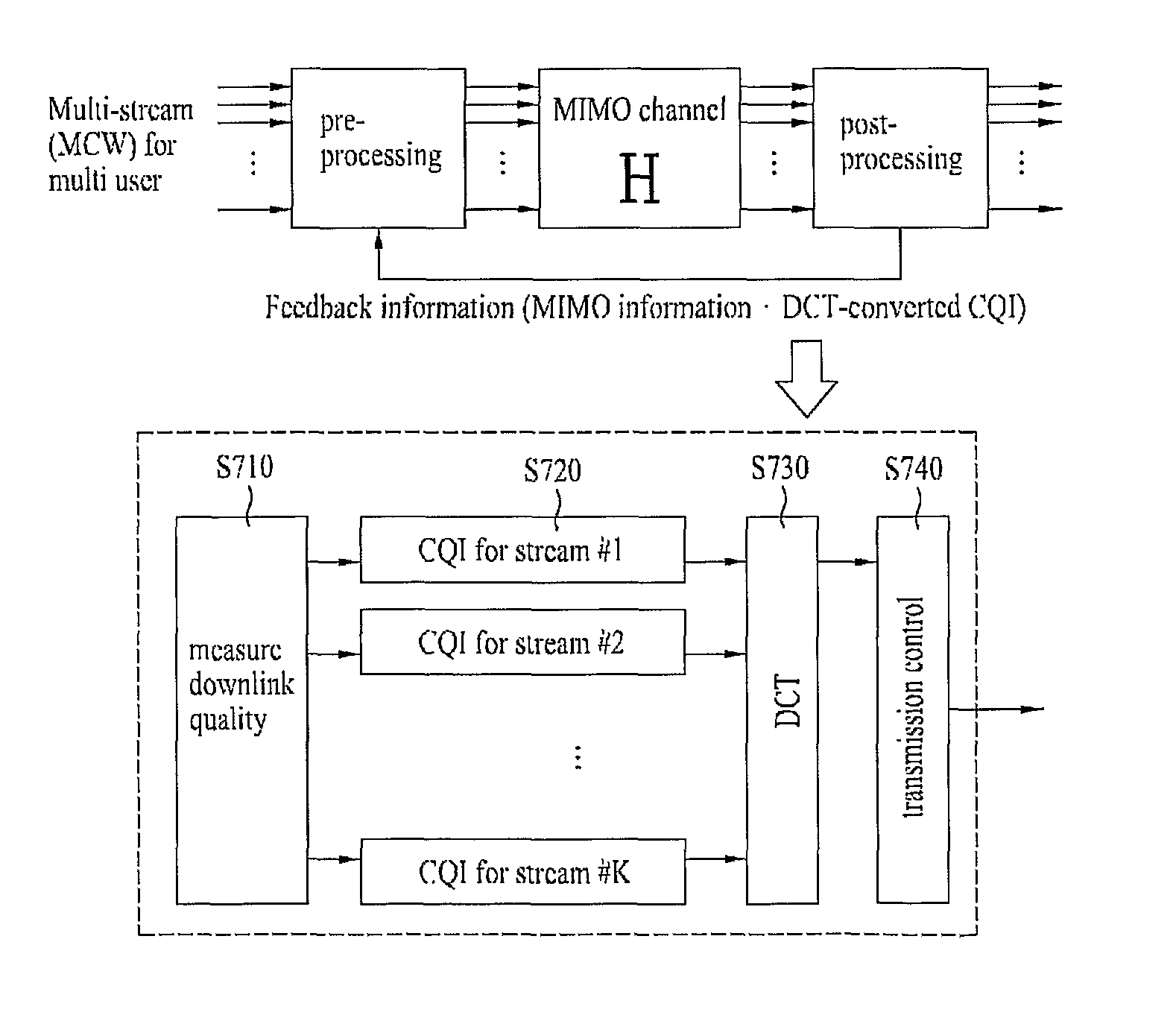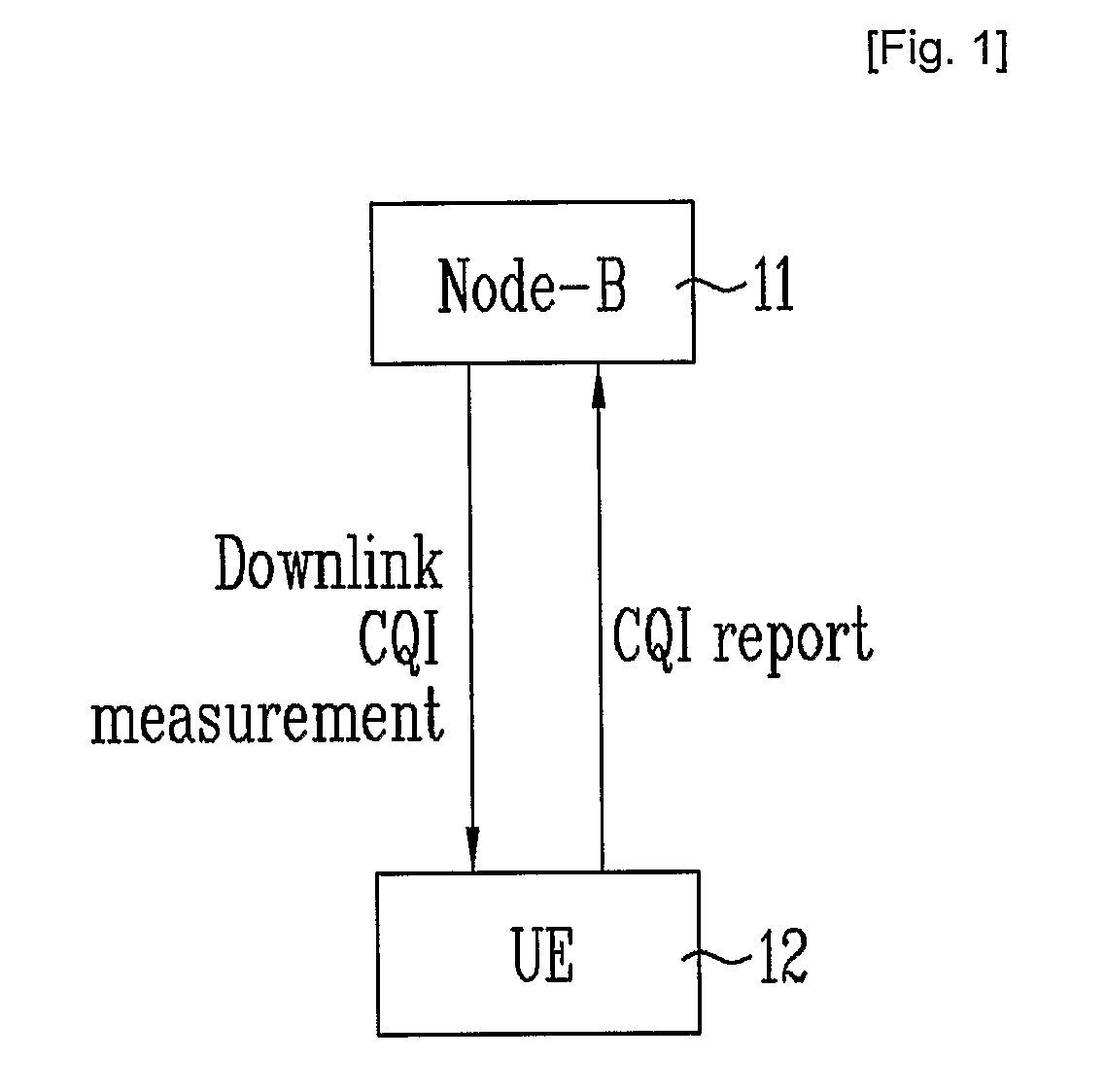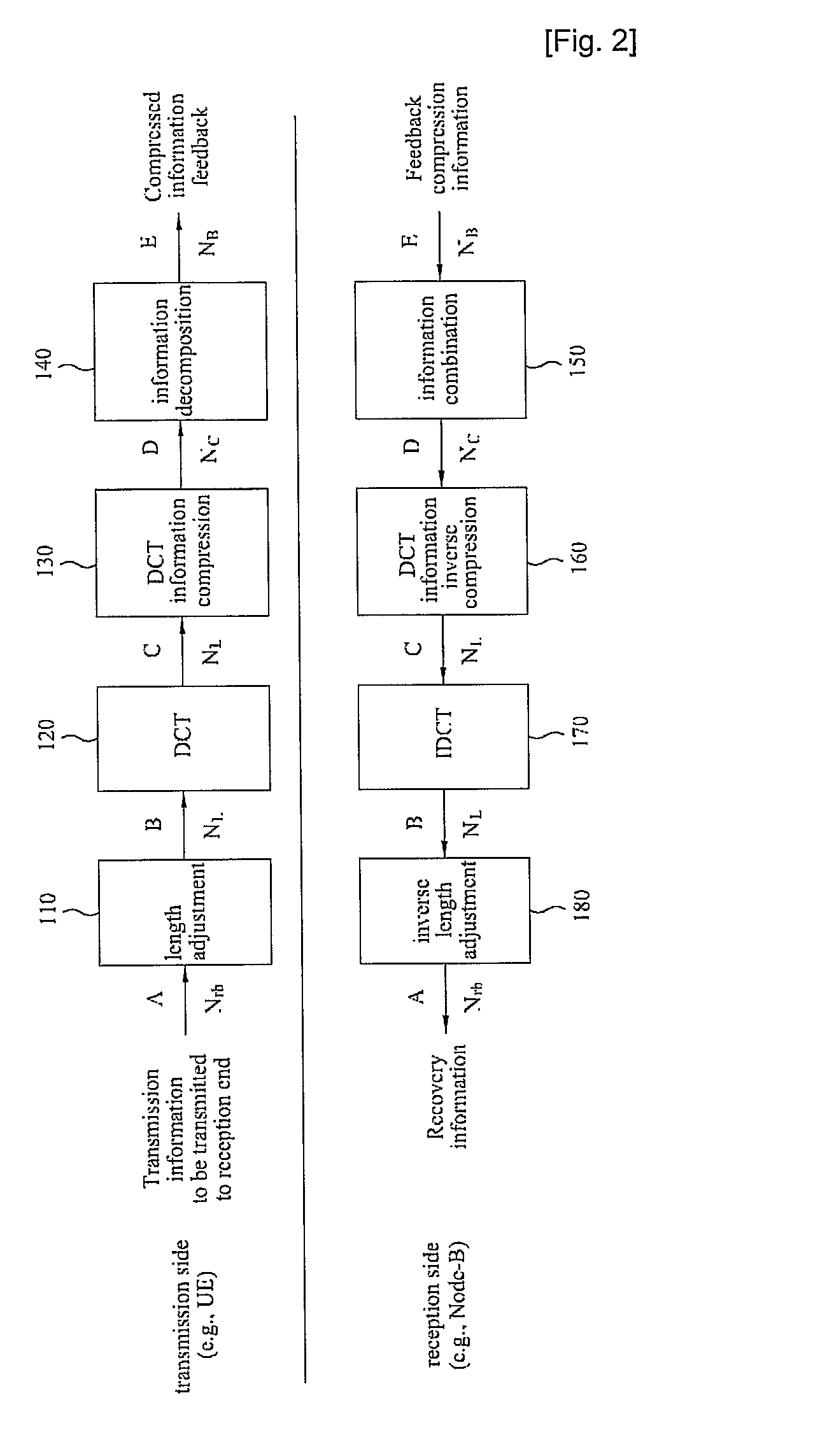Method for transforming data, and method for transmitting and receiving data using the same
a technology of transforming data and receiving data, applied in the field of transmitting data in a mobile communication system, can solve the problems of limiting the physical channel resources required for reporting cqi, and the difficulty of mimo system in effectively transmitting the increased cqi, so as to minimize the amount of information, effectively use limited wireless resources, and minimize the effect of information
- Summary
- Abstract
- Description
- Claims
- Application Information
AI Technical Summary
Benefits of technology
Problems solved by technology
Method used
Image
Examples
first preferred embodiment
[0173]The first preferred embodiment performs the DM process on the CQI for each CQI band of 2nd to 4th antennas (ant#2˜ant#4) corresponding to the CQI for each CQI band of a first antenna (ant#1, reference antenna).
[0174]FIG. 16 shows data distributed to individual antennas for use in a data transmission method according to a first preferred embodiment of the present invention.
[0175]In this case, if SINR(i)(j) is set to CQI of the j-th CQI band of the i-th antenna, the value DM(Δ(2)(j)) of the second antenna is denoted by Δ(2)(j)=SINR(2)(j)−SINR(1)(j). In this case, the DM process of the 2nd to 3rd antennas may be differentiated by the first antenna as shown in FIG. 16 or may be differentiated by a previous antenna of the first antenna. If the DM process is differentiated by the previous antenna, a multi-antenna demodulator of a successive interference cancellation (SIC) scheme is established, such that this case is very useful to a specific case in which the demodulated SINR value...
second preferred embodiment
[0176]The second preferred embodiment performs the antenna-area DM process of the first preferred embodiment, performs a 2D-DCT (2 Dimensional-Discrete Cosine Transform) process on all the SINR values of overall CQI bands of all the antennas, thereby minimizing an amount of information.
[0177]FIG. 17 shows data distributed to individual antennas for use in a data transmission method according to a second preferred embodiment of the present invention. FIG. 17 shows data distribution for each antenna in the case of the 2D-DCT process of 4×4 units. In this case, the 2D-DCT process is not always limited to the 4×4 units, and a variety of units can be applied to the 2D-DCT process according to communication situation, the number of antennas, and the number of CQI bands, etc.
[0178]The second preferred embodiment is more useful to the case in which the degree of corresponding between frequency bands of individual antennas is high, and when applied to that case, resulting in the minimized co...
third preferred embodiment
[0179]The third preferred embodiment performs the CQI measurement and the antenna-area DM process of the first preferred embodiment a predetermined number of times at intervals of a specific time (e.g., sub-frame of 0.5 ms units), collects the execution results, configures M×N matrix for each antenna, performs the 2D-DCT process on the matrix, and transmits the 2D-DCT result to the reception side. In this case, the size of the matrix may be determined in various ways according to the number of antennas, the number of CQI bands, and the number of unit execution times, etc.
[0180]The UE of the transmission side includes a plurality of buffers corresponding to the number of the execution times, each buffer temporarily stores the result of each execution time.
[0181]If the matrix is implemented with the 4×4 matrix, the matrix for the first antenna is as follows:
[0182]A=[A1A2A3A4]B=[B1B2B3B4]C=[C1C2C3C4]
[0183]FIG. 18 shows data distributed to individual antennas...
PUM
 Login to View More
Login to View More Abstract
Description
Claims
Application Information
 Login to View More
Login to View More - R&D
- Intellectual Property
- Life Sciences
- Materials
- Tech Scout
- Unparalleled Data Quality
- Higher Quality Content
- 60% Fewer Hallucinations
Browse by: Latest US Patents, China's latest patents, Technical Efficacy Thesaurus, Application Domain, Technology Topic, Popular Technical Reports.
© 2025 PatSnap. All rights reserved.Legal|Privacy policy|Modern Slavery Act Transparency Statement|Sitemap|About US| Contact US: help@patsnap.com



